56% of Parents With Young Children Are in Debt Due to Coronavirus Pandemic
The coronavirus pandemic has forced parents to take on new roles at home, such as teacher and daytime caregiver. Meanwhile, parents are facing financial strain. Fifty-six percent of parents have gone into debt due to the coronavirus pandemic, according to a LendingTree survey of more than 1,000 parents with children under 18.
Key findings
- 56% of parents have gone into debt due to coronavirus-related circumstances. Four in 10 added credit card debt, and 15% had to turn to a personal loan.
- Single parents are struggling more to pay bills amidst the coronavirus pandemic. Nearly 1 in 5 parents who are single, divorced or separated couldn’t pay their credit card bill last month, versus 9% of married parents. Fifteen percent couldn’t pay their rent or mortgage in full.
- 36% of parents tapped their child’s college fund to help cover expenses due to the financial strain caused by the COVID-19 outbreak.
- 6 in 10 parents had to spend money for their child’s distance learning. On average, they spent a little over $1,000 on supplies ranging from iPads and laptops (48%) to office furniture (15%).
- Parents said the hardest part of the coronavirus pandemic has been trying to work from home while taking care of kids (31%). They’re also struggling to manage their child’s distance learning (19%) while dealing with financial strain caused by income loss (18%).
More than half of parents are in debt due to the coronavirus pandemic
At a time when millions of Americans have been affected by job loss, money issues are a significant concern for parents: 56% of parents are in debt directly due to the coronavirus pandemic. Chief expenses include equipment to aid distance learning and entertain children stuck at home.
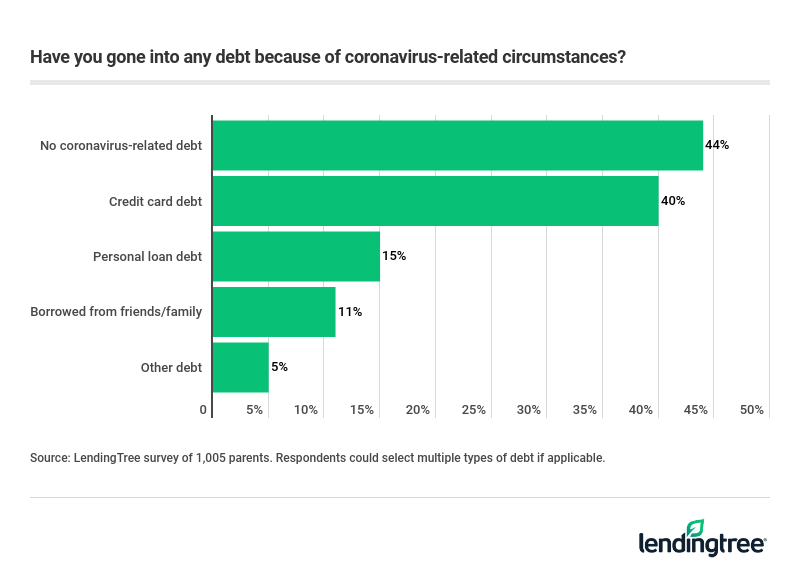
“The truth is that even before the outbreak hit, most Americans’ financial margin for error was tiny,” said Matt Schulz, chief consumer finance analyst at LendingTree and parent of an 8th grade son. “That means that even minor changes can have a major impact on the family budget. Then, when you consider how many parents are dealing with job losses or medical problems while also struggling to make sure their kids stay on track with school, it makes this time even more challenging financially.”
Of all types of debt, parents are increasingly adding to their credit card balances. Four in 10 parents with young children reported taking on more credit card debt than they can pay off. Fifteen percent of parents leaned on a personal loan, while one in 10 relied on friends and family for money.
Parents spent over $1,000 on distance learning supplies on average
Nearly half of parents of young children had to buy a computer or similar device (like a laptop or tablet) to assist their children in distance learning. Along with headphones, software and other school supplies, parents spent $1,018.50 on average turning their homes into virtual classrooms.
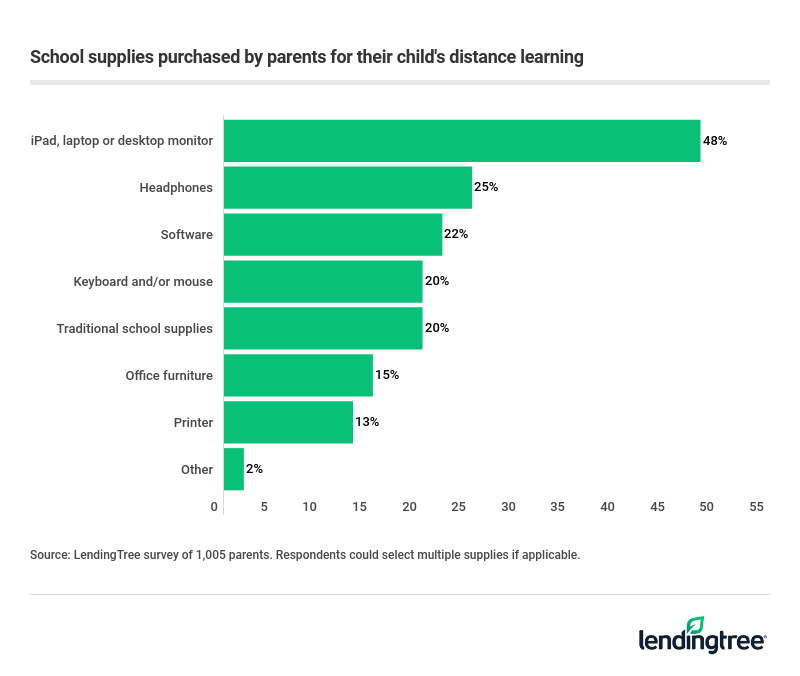
But it’s not just learning supplies that are draining the wallets of parents across America. Three in four parents agree that they’re spending a lot of money to keep their kids entertained while stuck at home. Gaming systems like the $300 Nintendo Switch have been flying off shelves since the pandemic began, as parents (many of whom are working remotely) grasp at a few moments of respite from working, teaching and parenting.
Stimulus checks cover groceries and other necessities in a pinch
As part of the Coronavirus Aid, Relief and Economic Security (CARES) Act, certain parents and children may be entitled to stimulus checks from the government: $1,200 for adults and $500 for each child. Most (82%) parents we surveyed received a stimulus check, and 37% of those parents said they plan to spend their check on groceries. Just over a quarter said they would use the stimulus check to pay for household bills.
Parents struggle to pay utility bills, mortgages amidst the pandemic
Four in ten parents struggled to pay their mortgage/rent or didn’t pay it in full within the last month. About the same amount struggled to pay their credit card, utility bills and phone bill.
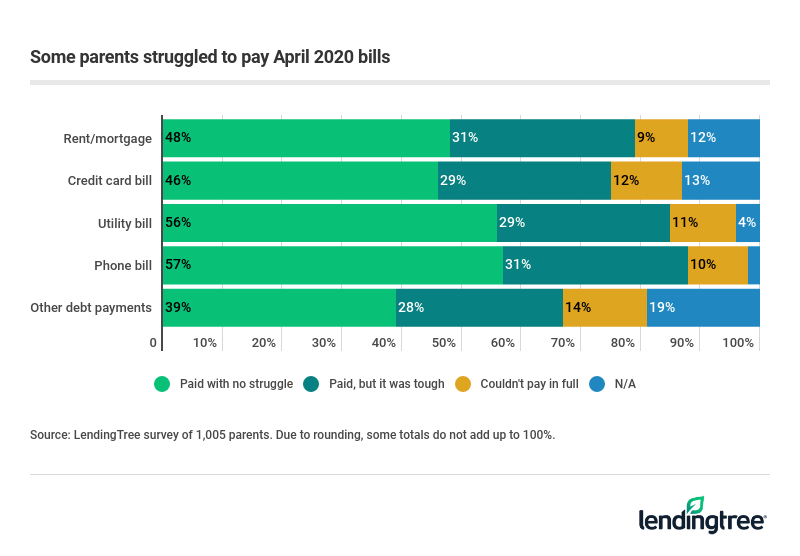
“Ultimately, parents need to prioritize,” Schulz said. “If you’ve lost a job, your top priorities should be keeping the lights on and making sure food is on the table. In those circumstances, you may not be able to provide your kid with everything they need to be successful in doing classes from home, so you should talk to your kids’ teachers or school officials and ask for their guidance. You surely won’t be the only one struggling.”
More than a third of parents tapped into college funds to cover expenses
During the coronavirus pandemic, anything more than a few months into the future seems distant, and that includes their children’s college plans. For 36% of parents, immediate financial needs caused by the coronavirus pandemic have led them to tap their children’s college fund. Fifteen percent of those surveyed said that they don’t have a college fund for their kids at all.
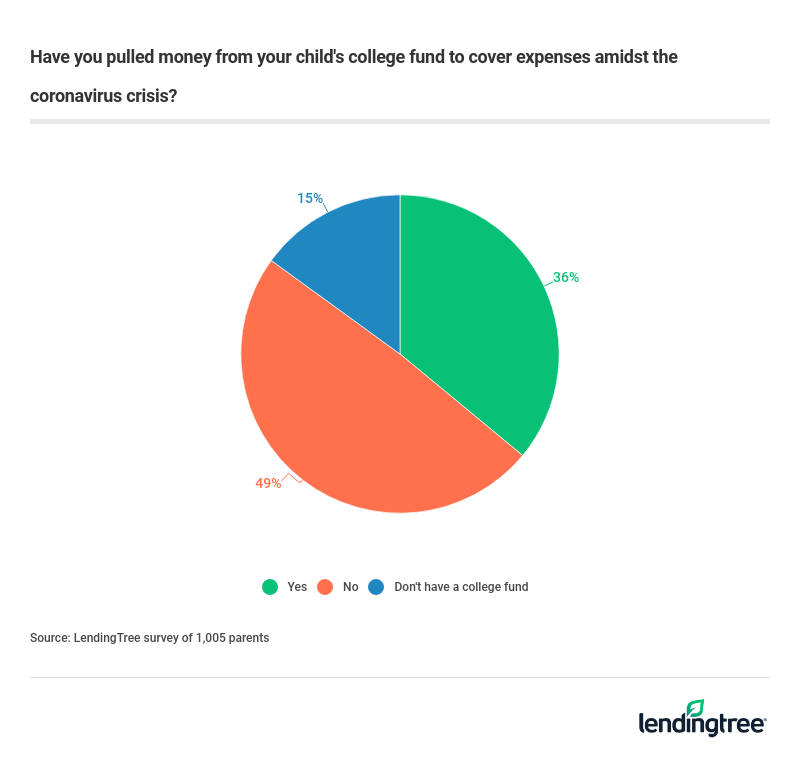
“In normal times, tapping a child’s college fund would be something that should be avoided as much as possible,” Schulz said. “These clearly aren’t normal times, however. If your financial world has been flipped upside down by the pandemic and that college fund can help you with some of the cost involved in distance learning, it’s worth considering.”
Financial strain adds to the stress of parenting during quarantine
Parents are no strangers to making sacrifices for their children. During the coronavirus pandemic, they must sacrifice valuable work time to provide for children who are stuck at home.
The No. 1 stressor for parents with young children during quarantine is balancing working from home with homeschooling their children — nearly a third (31%) of parents surveyed feel this way. Managing distance learning (19%) and financial stress (18%) followed. Parents are also dealing with anxiety as well as health concerns due to the coronavirus pandemic.
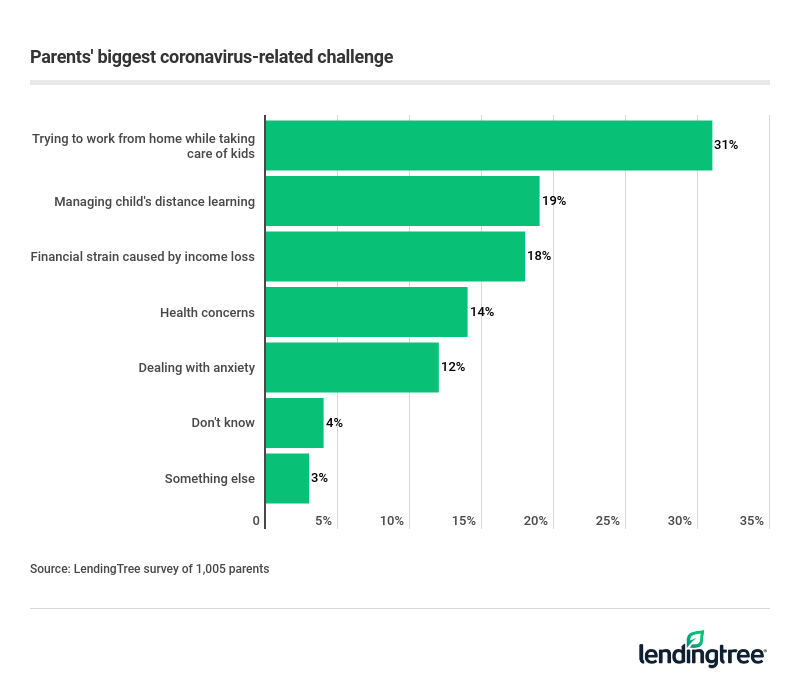
Methodology
LendingTree commissioned Qualtrics to conduct an online survey of 1,005 parents of children under the age of 18. The sample base was proportioned to represent the overall population, and the survey was fielded April 28-May 1, 2020.
Get personal loan offers from up to 5 lenders in minutes
Read More
Americans Spend $178 Stockpiling for Coronavirus Pandemic Updated March 18, 2020 In preparing for the coronavirus pandemic, Americans spent $178.44 stockpiling supplies like food, water and…Read More
63% of Americans Say Their Finances Have Been Impacted by Coronavirus Updated March 19, 2020 Nearly two-thirds of Americans are feeling the financial impact of the coronavirus pandemic, a LendingTree…Read More